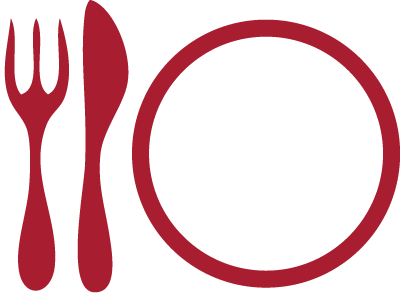

All Phuket’s foodies know that Michelin has been and gone – leaving one unsurprised champion, several moderately satisfied folk and a few downright disappointed, even angry, restaurateurs and chefs in its wake.
For the record, the Phuket ‘body count’ was: One 1-star, 12 Bibs & 25 ‘Plates’, making a total of 38 Phuket restaurants recognised by those famed inspectors.
But let’s backtrack and look at what Michelin means to restaurants and – more importantly(?) – to those who eat in them.
Born in 1900 as a travel guide (created by a tyre company), The Michelin Guide’s raison d’être was encouraging France’s car owners to travel more and, therefore, buy more tyres.
It was about where to go and where to eat; chefs didn’t figure.
Fast forward to today and Michelin will tell you it’s still all about the restaurant. Whatever chefs would have you believe, there’s no such thing as a Michelin-starred chef. Restaurants may promote themselves using the enticement of having a ‘Michelin-starred chef’ at the helm. But the reality is that they don’t exist. Stars are awarded to the restaurant, not the chef.

According to former International Director Michael Ellis (since 17 Sep 2018, replaced by Gwendal Poullennec, the man who launched Michelin on Thailand) there are just five criteria: “quality of ingredients; flair and skill in preparation and combining flavours; the chef’s personality as revealed through their cuisine; value for money and consistency of culinary standards.”
To achieve its objectives, Michelin claims to have a battlefield force of full-time inspectors munching through ten meals a week. They’re anonymous, pay their bills and experience exactly what any other diner would experience at that time on that day ordering that meal. If you’re being considered for a star rating, expect to receive several visits a year.
Now, let’s say you’ve got a star, how could you lose it? Well, if your restaurant’s standards slip (remember that key criterion: consistency), your stars slide away alongside with them. Michelin claim to re-review every starred restaurant every 18 months unless they receive a complaint, in which case they put together an instant strike force and descend on the hapless establishment. One famous London restaurant lost two stars in one ‘strike’ following a complaint. The owner was personally mortified. He cried!
Because, when a restaurant earns its stars, it’s always the top dog who gets the praise and recognition – and therefore it’s on his or her head when it all goes wrong. Also, despite that ‘no-starred chef claim’, make no mistake: a chef leaving can be enough to cause Michelin to withdraw its star. Go figure.
So it’s hardly surprising that, never mind how it should work, we’ll always be hooked on the idea of the ‘Michelin-starred chef’ – whether such a beast exists or not.
…and the other Phuket 37?
For those not blessed with the coveted star, there’s the ‘Bib’.

In 1955, Michelin introduced a second designation – a red ‘R’, which in 1992 morphed into ‘Repas’ (French for meal – but you knew that, right…). Bib Gourmand is its descendant — and ‘Bib’ restaurants are now indicated with an icon based on ‘Bibendum’, the character we all know as the Michelin Man.
Michelin awards a ‘Bib Gourmand’ to restaurants considered by inspectors to offer good value. Presenting “carefully made meals at modest prices”, they are restaurants where you can get two courses and a glass of wine or a dessert for THB 1,000, excluding tax and tip.
The 12 ‘Bib’ restaurants in Phuket include one near Sarasin Bridge, one in Pa Klok and another in Chalong. The rest are in Phuket Town. Notably, not a single ‘Bib’ was awarded to restaurants in the island’s major tourist spots…
Then there’s the ‘Plate’ (L’Assiette Michelin)

Born in the 2016 Paris Guide, the ‘Plate’ replaces a curious blank space next to a restaurant’s name. While listed in the guide, nobody knew why such restaurants were there – or what their inclusion signified. Another logo did the trick!
The ‘Plate distinction’ indicates that the restaurant has quality food, and particularly recognises restaurants that serve a good, simple meal with an emphasis on “good cooking; fresh ingredients, capably prepared”, but which have so far missed out on stars and bibs.
And there’s more…

You might think that Michelin wants to be seen as ‘inclusive’ in a world where nobody’s excluded... where everyone’s a winner...
So we have the ‘Forks’ and the Monopoly-like ‘Pavilions’… and ‘Notable Wine List’ and (at least in Thailand) ‘Interesting Cocktail List’ and ‘Interesting Beer List’ and… but we’ll leave them for another day.
The last word?
Anyone who wants to know more about the inner workings of Michelin, find a copy of L’inspecteur se met à table, a book published in 2004, written by Pascal Remy – a 16-year Michelin ex-inspector who reveals all… or at least his side of it all.

Bib Gourmand:
“Good quality, good value” and “simple yet skilful cooking” that costs THB 1,000 or less.

L’Assiette Michelin:
“Fresh ingredients, capably prepared: simply a good meal,” and “good cooking.”

One Star:
“High-quality cooking” with meals “carefully prepared to a consistently high standard” and Michelin “worth a stop” There are less than 2,000 one-star restaurants.

Two Stars:
“Excellent cooking”, “expertly crafted”, “refined, inspired, and sometimes original” and “worth a detour” There are only 342 two-star restaurants.

Three Stars:
“Worth a special journey”, providing “exceptional cuisine”, “elevated to an art form.” There less than 100 three-star restaurants worldwide.
